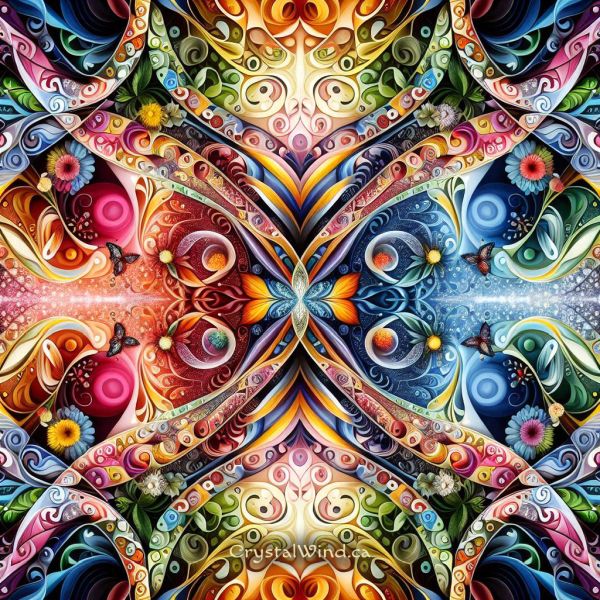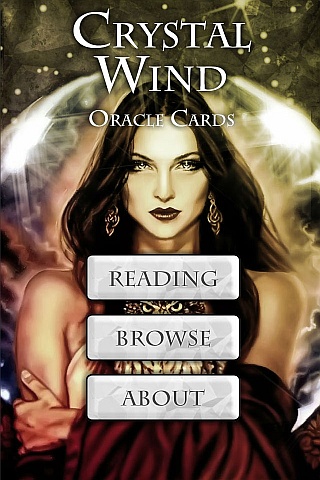Synchronicity: The Meaning Behind Repeating Signs You Cannot Ignore
- Details
- Written by David R. Hamilton PhD
- Views: 9415

We were driving to the graveyard earlier in the year on what would have been my Dad’s birthday, except that he’d passed away a year earlier after suffering from a brain tumor.
As I was driving, I spoke to dad in my mind, as most people who have lost loved ones do.
I told dad that I missed him and that, except for a few seemingly incredible synchronicities that happened shortly after his passing, the frequency and sense of astonishment at these has waned. I asked if he could do something right then that would leave me in absolutely no doubt whatsoever that he is still around. It was pouring with rain at the time. “I’m feeling a bit lost and vulnerable, Dad. I really need this,” I said.
Within about 30 seconds, the rain abruptly stopped. Then, incredibly, the car passed right through a rainbow.
Side on!
All the colours, from red to violet.
The car lit up. It was as if someone was shining a torch from inside the car. The headlights also lit up the spray from the wet road in bright colours.
It was an unforgettable experience.
When we came out the other end, I was half-laughing, half-crying. The first words that came out of my mouth were, “Well that was just showing off.”
This is an example of synchronicity – aka, meaningful coincidence.
Some write synchronicities off as random chance. But what if they’re not? What if synchronicities reveal something deeper about reality and its connection with our minds?
What is a synchronicity?
A synchronicity is a ‘meaningful coincidence’ – when two seemingly related things (incidences) happen apparently by chance and without a logical, causal connection, but it holds meaning for the person experiencing it.
The term was coined by the Swiss psychiatrist Carl Gustav Jung in the 1920s. Jung believed that there was a deeper meaning in nature than the way we typically think of things, a deeper underlying connectivity to events and circumstances.
In his book, Synchronicity: An Acausal Connecting Principle, he wrote that events (and people) literally ‘fall together’ in time, and that it’s the connection between them that actually causes their co-incidence. The prior connection pulls them together.
Several years ago, I purchased a pack of CDs for my laptop because I needed to save several large files. While I was at the shop counter I was met with a sales pitch for floppy discs that were on a considerable discount. This was at the time in the early 2000s when floppy discs were being phased out for CDs. I politely declined the offer, believing that I was being modern and going with the times.
Later that day, my partner and I went on a long drive and decided to stop for some food in a small town that we’d never visited before. We pulled into a large, but empty car park.
When I got out of the car, I noticed a small box lying on the ground right in the centre of the empty space beside us. Turned out it was a box of floppy discs. An unopened pack of ten, still in their cellophane wrapping.
It took me aback, considering the sales pitch in the shop a few hours ago.
I had an odd sense that I was supposed to find them – given how I started this blog, you might imagine that’s how I would interpret the event – so I took them.
Later, when I got home, and tried to save the files on the CDs I had bought, I learned that the CD inlet on my laptop was only for playing CDs, not for burning files onto. For my younger readers, that’s what saving data onto CDs was called. My laptop had a CD player, not a CD writer. I didn’t know that at the time.
It turned out that I had needed floppy discs all along.
And saving the files required the full capacity of all ten of floppy discs in the box.
For me at the time, that was a fairly decent example of synchronicity.
The Origins and development of the idea of synchronicity
The roots of synchronicity go back to Jung’s exploration of the unconscious mind and his work in psychoanalysis. He was a pioneer in exploring the connection between the psyche and the physical world.
His view transcended the more mechanistic views of his time. He proposed that the universe is not just a place of random, disconnected events, but rather is a unified, holistic entity where everything is meaningfully connected.
He first introduced the term in the 1920s and elaborated on it extensively in the 1950s, particularly in the abovementioned book.
His interest in the subject was partly sparked by his repeated experiences with patients who reported coincidental events that had profound personal meaning to them.
He was also influenced by Eastern philosophies, particularly Taoism and the I Ching, traditions that emphasize the interconnectedness of all things.
Jung’s viewed synchronicity as a demonstration of the collective unconscious – a shared pool of memories, instincts, and experiences that all humans possess.
He believed that the collective unconscious could manifest itself in synchronistic events, offering guidance, insight, or a sense of connection to something greater than oneself.
Pauli
Jung collaborated with Nobel Prize-winning physicist Wolfgang Pauli. They explored the parallels between quantum mechanics and Jung’s ideas about the psyche.
They wondered if synchronicity reflected underlying principles of the universe that were beyond our current understanding at the time, but that hinted at the possibility of non-causal connections between consciousness and matter.
Pauli wasn’t alone among physicists in thinking along these lines. He was one of several early founders and leaders in quantum theory whose recognition of the connectedness of things led them to consider a mystical view of the world.
Max Plank, considered the ‘Founding Father’ of quantum physics said,
“I regard consciousness as fundamental.”
Even Erwin Schrodinger, famous for the equation that now bears his name, wrote,
“The material universe and consciousness are made out of the same ‘stuff’.”
The ‘Second’ Pauli Exclusion Principle
Pauli is famous in physics for the Pauli Exclusion Principle, a principle that describes how two of a specific class of subatomic particle (fermions) can’t occupy the same quantum state at the same time.
It’s foundational to our modern understanding of chemistry and allowed theorists to understand how chemical bonds form.
But he also became known for a second Pauli Exclusion Principle – or the ‘Pauli Effect’, as it became known as. It was a half serious – half joking talking point among physicists of the day: that no functioning piece of equipment and Pauli can occupy the same room at the same time.
It was frequently noted that when Pauli entered the labs of colleagues, sensitive pieces of technical equipment would incur critical failure for no apparent reason. It happened so frequently that some scientists even banned him from their labs.
Through his friendship with Jung and his exploration of synchronicities and the idea of an interconnectedness between consciousness and matter, he became convinced that the Pauli Effect was actually real.
So too did some serious physicists at the time, despite the jokes they made to lighten the mood. The book ‘Thirty Years That Shook Physics: The Story of Quantum Theory’, by renowned cosmologist George Gamow captured it well.
Gamow wrote that one day in the laboratory of Nobel Prize-winning physicist James Franck in Göttingen, German, a piece of complicated and sensitive equipment for studying atoms incurred a critical failure for no apparent reason.
Franck and his colleagues scratched their heads, wondering what could have happened because there was no logical explanation for it. Invoking the Pauli Effect, they joked that the only possible explanation for it was that Pauli must be around somewhere.
Well it turned out that he was.
Pauli had been travelling from Zurich, Switzerland, to visit the lab of Neils Bohr in Copenhagen, Denmark. On route, his train had stopped for a few minutes in Göttingen Station.
When?
At the exact time that Franck’s equipment had broken down.
Had Pauli’s presence somehow affected Franck’s equipment, some wondered, imagining a deeper layer to reality that intertwined with the human psyche? Or was it really just a co-incidence?
How do synchronicities work?
Some people believe that synchronicities are just random chance that we attach meaning to.
A commonly cited argument is that if you drop a hundred marbles in a room, they won’t all settle evenly spaced apart, but that some will cluster together, not because they are connected but simply because they have randomly landed that way.
In the same way, unconnected events cluster together in life that we imagine to be connected or meaningful and thus interpret them as synchronicities.
As a scientist myself, that notion of course makes sense. A few years ago in Dunblane, the town in central Scotland where I live, a car smashed at speed into a bollard at the bottom of the High Street. It was completely out of the ordinary. Within moments, police, an ambulance, and a fire engine were on sight and the entire area was cordoned off.
An hour later, a car flipped upside down and skidded to a halt on another town centre street just 200 meters away.
People now began to suspect a connection. Perhaps even some sort of attack. Dunblane is relatively quiet. These kinds of things don’t tend to happen here. One, perhaps, is a freak but chance event. But two within an hour?
Yet, it turned out to be simply two unconnected things that just happened to occur at that time. The driver of the first car, waiting to collect his wife from a shop, slipped and got his foot stuck on the accelerator pedal. The second car was traveling a little too quickly, clipped the curb, and flipped over.
However, just because clustering of unconnected events surely does occur, this does not mean that all events and circumstances can be explained in this way. There may be something deeper going on sometimes.
Some people believe that synchronicities are the result of the unconscious mind picking up on subtle patterns and cues in the environment that are related to things we’re thinking about. These cues then guide our behaviour, so that we play a subtle role in the creation of synchronicities and therefore interpret them as meaningful.
Others suggest that they might be related to the concept of ‘morphic resonance’, as proposed by Rupert Sheldrake. According to this theory, invisible fields of information connect all living things. These allow for the transfer of knowledge and patterns across space and time.
From a more mystical perspective, synchronicity can be thought of as the universe’s way of communicating with us, offering signs and guidance through the events of our lives.
A closely linked interpretation is that consciousness is the underlying fabric of reality and thus everyone and everything is connected. Synchronistic events are then simply patterns of thought of beliefs manifesting as events in our lives.
Or perhaps it’s a bit of all these interpretations.
Some examples of synchronicities
Regardless of the why, there’s no doubt that seemingly spooky things happen in life that defy normal ideas of logic.
Whether you believe in random chance or something more mystical, here’s a few examples of the types of synchronicities that occasionally show up in our lives.
Dreams and real-life events
You have a vivid dream about a specific place, and the next day, a friend you haven’t spoken to in years mentions that same place in conversation.
Thinking of someone and then encountering them
You think about an old friend or acquaintance you haven’t seen or spoken to in a long time. Later that day, you bump into that person unexpectedly in a location you wouldn’t normally expect to see them.
Repeated symbols or numbers
You keep seeing the number 11:11 on clocks, receipts, or other places, especially during moments when you are contemplating a major life decision. Some believe that the repeated appearance of this number might be interpreted as a sign that you are on the right path or that the universe is guiding you.
Books, music, or media with specific messages
You’re struggling with a difficult decision or a personal issue, and suddenly you come across a book, song, or movie that perfectly addresses your situation, offering advice or insight that feels incredibly relevant.
Meeting the right person at the right time
You’re considering a major career change but are unsure of the direction you should take. At a social event, you meet someone who works in the exact field you’re interested in and provides you with valuable advice, connections, or opportunities. The meeting feels fated, as if it were meant to happen to help you move forward in your life.
Unexplained alignments of events
You’re planning a trip and feel drawn to a specific destination without knowing why. Once you arrive, you meet someone or experience something that profoundly impacts your life. The way events aligned to bring you to that place at that particular time feels more than coincidental—it seems like a significant turning point or a message from the universe.
Unexpected help or solutions
You’re facing a challenging problem and have no idea how to resolve it. Suddenly, out of nowhere, someone offers you the exact help or information you need to solve the problem. This unexpected assistance feels like more than just a lucky break; it seems like a synchronicity that provided exactly what you needed.
Emotional connections to specific dates or places
You feel an inexplicable urge to visit a certain place, and when you do, you discover that it’s the anniversary of a significant event from your past, or you encounter someone connected to that event. The emotional connection to the date or place adds a layer of meaning that makes the experience feel deeply significant.
Meaningful or not?
Synchronicity can have profound implications for how we view our lives and the world around us.
For those who experience them, they can bring a sense of awe, wonder, and a sense of connection to something greater than ourselves.
For me, each time I experience a synchronicity, I fuels me with a sense of hope and faith; that I am being guided, that I will find a way through the difficulties and challenges in my life, and a sense that life is more magical than we tend to imagine.
That’s how I felt when we drove through the rainbow.
Whether they are meaningless and random or evidence of the interconnectedness of all things, the interpretation is a personal one.
For me, they help serve as a reminder that life isn’t random and disconnected, but hint that life is meaningful and that all things are deeply connected; maybe even magical, and that everywhere things are subtly imbued with purpose.
© 2025 CrystalWind.ca & Author | All Rights Reserved | No reproduction without permission | Awakening Souls Since 2008.
#CrystalWind #SpiritualJourney
Liked this article? Dive deeper into personal growth and wellness! Check out CrystalWind.ca for spiritual wisdom or explore AromaWorx.ca for natural well-being tips. Spread the positivity—share this with friends on their happiness journey!
Let’s Chat! Drop Your Thoughts Below! ![]()
Latest Articles

Imagine a world of inspiration and healing, free for all—made possible by YOU!
Donate Now—Ignite the Magic at CrystalWind.ca!

Epilepsy - Finding A Cure
Your donation can make a difference!
Help us find a cure – donate now!
Unlock Your Light: Join Lightworkers Worldwide on CrystalWind.ca!
Follow Us!
Featured This Month
Cancer Mythology
The Mythology of Cancer: A Celestial Tale of Loyalty and Sacrifice Among th... Read more
Sun in Cancer
Cancer Sun Sign Characteristics Overview The name "Cancer" comes from Latin, ... Read more
Lugh - Celtic God Of The Sun
The god Lugh was worshiped in Ireland as a deity of the sun. This connection... Read more
Chalcedony
The Stone Of Orators Chalcedony was very popular as a decorative stone in ant... Read more
Egyptian Zodiac/Astrology
Egyptian astrology was one of the earliest forms of astrology. The Egyptians w... Read more
Lammas by The Hedgewitch
Although in the heat of a Mid-western summer it might be difficult to discer... Read more
Abalone Shell
Echos Of The Ancestors Abalone strengthens the structure of the body and th... Read more






























































































































































